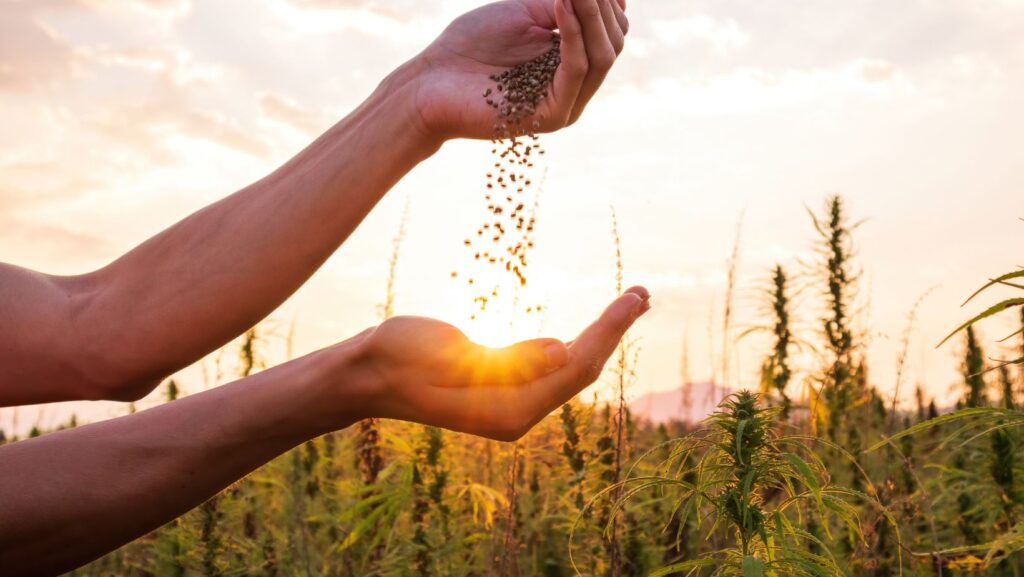Selecting the right cannabis seeds for your specific climate is crucial for successful cultivation. With the vast array of seed options available, understanding the factors that affect seed performance can help you make informed decisions.
This article explores essential considerations for choosing cannabis seeds tailored to your local environment, ensuring robust growth and optimal yield.
It also delves into the science behind seed adaptation to climate, helping growers select strains that survive and thrive under specific environmental conditions, thereby maximizing their cultivation efficiency and yield potential.
Understanding Climate Zones
Identifying Your Climate Zone
Before choosing cannabis seeds, it’s essential to identify your climate zone. Climate zones are categorized based on temperature, humidity, and the length of the growing season. These zones significantly influence which cannabis strains will thrive.
For example, the Köppen Climate Classification system can provide a detailed categorization of your area’s climate, guiding your seed selection process. Understanding your specific zone helps filter seed choices to those genetically predisposed to flourish in your environmental conditions, reducing trial and error and increasing cultivation success.
Selecting Strains for Specific Climates
Each cannabis strain has unique characteristics that make it suitable for certain climate conditions:
- Cool Climates: Strains that withstand lower temperatures and shorter growing seasons are preferable. These typically have a faster flowering time to avoid frost damage.
- Warm Climates: Strains that endure high temperatures and extended sunlight exposure are ideal. These often have longer flowering times, taking full advantage of the longer growing season.
- Humid Climates: Look for mold-resistant strains, as high humidity can lead to fungal diseases in susceptible varieties.
In choosing a strain, it’s also vital to consider the specific variations within a climate zone, such as microclimates and seasonal fluctuations, which can affect the resilience and productivity of the plant.
Genetic Considerations
Sativa vs. Indica vs. Hybrid
The genetic background of a cannabis seed plays a pivotal role in its adaptability to climate:
- Sativa: Generally better suited for warmer climates, sativa strains are known for their tall stature and long flowering periods.
- Indica: These strains are typically more robust in cooler climates, featuring a shorter and bushier growth, which makes them less susceptible to cold damage.
- Hybrid: Hybrids can balance traits from both sativa and indica varieties, allowing for more flexibility in climate adaptation.

The choice between these types can be dictated by not only the climate but also by the effects desired from the final product, as sativas are generally more energizing while indicas are relaxing, influencing consumer preferences.
Understanding Seed Genetics
The genetics of a cannabis seed dictate its growth characteristics and resilience:
- Origin of the strain
- Typical growth patterns
- Resistance to local pests and diseases
Exploring the genetic heritage of seed offers insights into its evolutionary adaptations, which can be crucial for anticipating how it will perform in your garden. For instance, seeds from strains originating in mountainous or northern regions might be more tolerant of cold and fluctuating temperatures.
Practical Seed Selection
Factors to Consider
When selecting cannabis seeds, consider these practical factors:
- Flowering Time: Choose strains whose flowering time will conclude before the onset of extreme weather conditions.
- Size and Growth Pattern: Seed banks often provide detailed descriptions of growth patterns, which can help you select the right
- Yield Expectations: Consider the expected yield, which can vary based on climate adaptability and the care provided.
These factors play a critical role in not just the plant’s survivability but also in the efficiency and ease of cultivation, impacting everything from the timing of harvests to the management of space and resources.
Example Seed Selection for Various Climates
- Mediterranean Climate: Opt for strains that utilize long, dry summers, such as many sativa-dominant hybrids.
- Continental Climate: Choose fast-flowering indicas to avoid early frost.
- Tropical Climate: Look for strains with high humidity resistance and a tolerance for heavy rainfall and intense heat.
Selecting the appropriate seeds for these climates can dramatically affect the grower’s success rate. Using the specific examples provided can help novice and experienced cultivators narrow their options and select strains that are more likely to prosper in their respective environments.
Cultivation Tips
Adjusting Cultivation Practices to Climate
To maximize the potential of your chosen seeds:
- Watering Schedules: Adjust according to humidity and rainfall patterns. More arid climates will necessitate more frequent watering, whereas humid climates require careful water management to prevent mold.
- Nutrient Management: Tailor your fertilization practices to the growth stage of the plant and the specific needs imposed by your climate.
These cultivation techniques are essential for adapting to the climatic conditions, ensuring that plants receive optimal care tailored to environmental challenges.
Leveraging Local Microclimates
Utilize microclimates within your growing area to protect and enhance growth:
- Use natural windbreaks or reflective surfaces to manage temperature.
- Employ shading techniques to protect from excessive sunlight or to preserve heat during cooler days.

Understanding and utilizing microclimates effectively can offer additional advantages, such as extending the growing season, enhancing plant health, and increasing yield by creating optimal conditions for cannabis growth.
Conclusion
Choosing the right cannabis seeds for your climate is not just about selecting a strain you like; it involves a comprehensive analysis of your local environment, understanding the genetic makeup of potential strains, and adjusting cultivation practices accordingly.
By meticulously selecting seeds based on the discussed factors, you can enhance your cultivation success, leading to healthier plants and more abundant yields.
Effective seed selection is foundational in maximizing the potential of your cannabis cultivation endeavors. This strategic approach improves the odds of successful harvests and contributes to a more sustainable and efficient cultivation practice.


More Stories
AI’s Unseen Edge: Security Risks and Ethical Concerns in Gaming and Media
The Power of a Strong Start: Why Gaming Platforms Reward New Players So Generously
Australia’s Success On The International Stage: Analyzing Cricket World Cup Victories